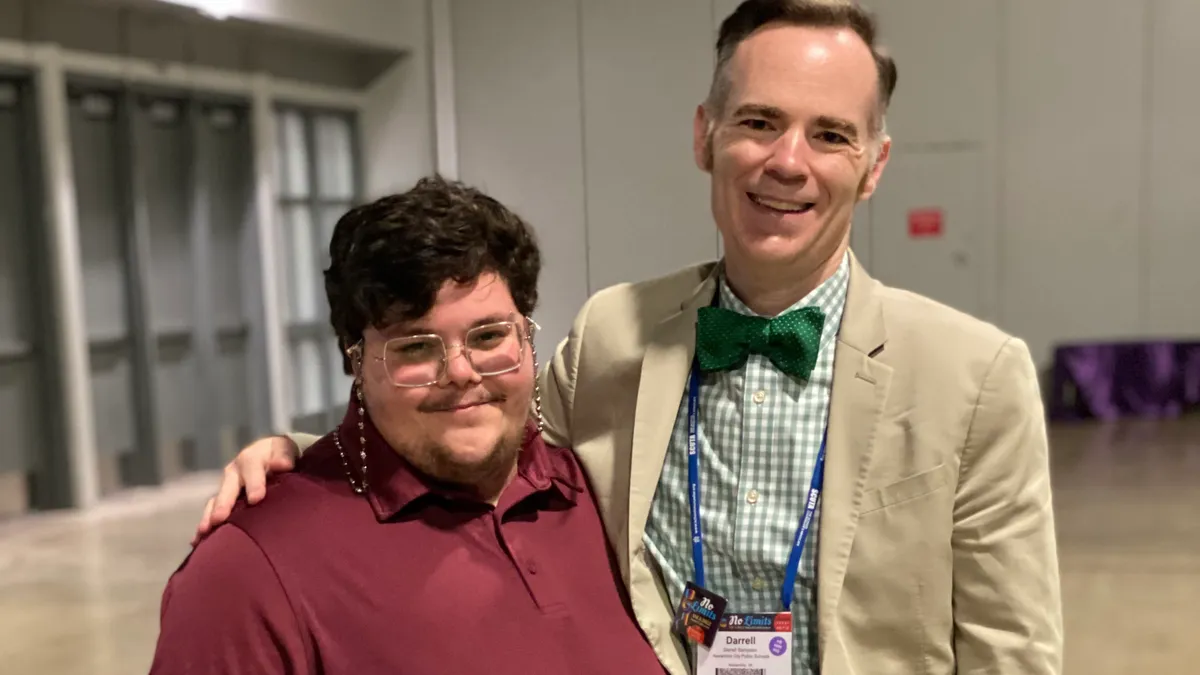AUSTIN, Texas — When Jennifer, a transgender elementary school student, needed to use the restroom at school, her principal told her she could technically use any bathroom.
However, that gender-neutral policy came with a not-so-neutral caveat: Jennifer's principal asked her to use the boy's bathroom "so that you don't get teased or people don't have questions for you or the other students aren't uncomfortable," Jennifer recalled. In the end, Jennifer did not use a school restroom for months.
Jennifer's experience is one of many compiled by Darrell Sampson, executive director of student support teams in Virginia's Alexandria City Public Schools. However, as LGBTQ students' experiences take center stage in the conversation around Title IX protections, elementary transgender and LGBTQ students' experiences are sometimes overlooked.
There has been some talk of "well, this isn't an elementary issue,'" Sampson said on Monday in a presentation at the American School Counselor Association's annual conference.
Despite this misconception, multiple counselors attending the conference said they have noticed more elementary school students — especially in the 2021-22 school year — show interest in LGBTQ issues and express different gender identities.
"They're taking social cues from the time that they're four," Sampson said. "It's because they are getting those cues, and they are coming to have language for how they identify with gender prior to starting kindergarten. That, I think, is slowly coming through."
Transgender elementary student experiences
Sampson's research — which focuses on transgender students' qualitative experiences — shows transgender students undergo a gamut of internal experiences, grapple with in-school resources, and can benefit from out-of-school support.
These children, Sampson said, often feel as if their identities are something that needs accommodation at school, rather than school being a place where they can feel safe and seen.
Elementary students also related feelings of exhaustion and tokenism, Sampson said.
Of the 8- and 9-year-olds in his research, Sampson said these transgender students "had the burden of educating everyone in their school, and they were the resource for their school for their gender identity. It was exhausting for them."
"They spoke about how they never could just breathe. There was always someone asking, always someone wondering, whether it was adults or their peers."
One student Sampson spoke with, for example, said "it's been challenging switching teachers and trying to explain it to a whole 'nother group about who I am and then just doing that again and again and again."
Peers can sometimes relieve this burden by stepping in on their behalf, for instance by correcting teachers when they using a deadname — a transgender student's birthname that they no longer use.
Students also told Sampson they felt school staff and administrators minimized their identities. One student said her teacher excluded her from participating in show-and-tell by never calling on her "because she didn't want me to tell others about different things … I wanted to show [LGBTQ] books and flags."
In other examples, bus drivers and substitute teachers told elementary transgender students they were going to hell and allowed those students to be bullied.
Out-of-school support like LGTBQ camps and local community groups proved vital for students, Sampson said.
Challenges for counselors and practices to help
School counselors, meanwhile, report feeling unprepared to properly respond to and care for transgender students.
Gendered school policies and practices, parent pushback to their children's chosen gender identities and expression — such as name changes — and peer response are some challenges counselors said they face.
"Schools are well-maintained heteronormative and cisnormative spaces," Sampson said. "They really resist any change to the status quo."
During the presentation, he told the school counselor audience ways they could help:
- Believe in and accept transgender students' identities
Use students' chosen names and pronouns. "I know that's a tall order," Sampson said, especially in places where LGBTQ identities are being increasingly marginalized.
In areas where policies prohibit teachers from doing so, Sampson reported teachers still using correct names and pronouns at least when speaking one-on-one with their transgender elementary students. Teachers also used their students' chosen names on report cards and in sending letters home when parents were accepting of their children's identities.
- Deconstruct gendered spaces and subjects
Gendered facilities like restrooms, splitting groups of students into "boys and girls," and teaching sex education to students according to their gender, for example, are all harmful practices for nonbinary students. By sticking to these practices, schools "actively maintain the marginalization of these students," Sampson said.
- Provide inclusive training and school resources
Inclusive books, movies and other media can all help transgender students feel safe and accepted. School staff can also divide classes so their transgender students are placed with peers who will support and advocate for them.
Everyone who interacts with students, including bus drivers and substitutes, should receive training, Sampson said.














